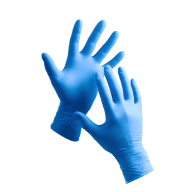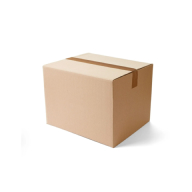WeeSafe WeePro Max Integral Coverall Type 4/5/6, White/Orange
Product description
Professional protective coverall offering comprehensive protection against chemical, biological, and particle hazards. This PPE Category III garment features thermosealed seams for protection against fine particles, liquids, and aerosols, while maintaining breathability for user comfort. The antistatic treatment and integrated safety features make it suitable for hazardous environment applications.
Product Features:
- Thermosealed seams for particle, liquid, and aerosol protection
- Antistatic treated material for electrostatic charge dissipation
- Zipper closure with adhesive flap
- Elastic fittings at wrists, ankles, and waist
- Integrated overshoes
- Breathable material construction
Technical Details:
- Protection Types 4, 5, and 6
- Tested against biological risks
- Heat-sealed seam construction
Standards:
- EU Regulation 2016/425 compliant
- PPE Category III certification
- CE certified
- EN 1073-2
- EN 1149-5
- EN 14126
Defines how the overalls secure and fasten when worn, affecting ease of use, safety, and functionality in various work environments.
Offers full head and neck coverage, shielding against dust, debris, and the elements. Provides enhanced protection and cleanliness.
Offers enhanced warmth and protection in cold conditions with specialized thermal insulation. Ideal for maintaining comfort and focus in demanding environments.
Measured in grams per square meter (g/m²), indicating fabric density and durability. Higher values offer more protection and insulation for demanding work environments.
Indicates how the waist is designed and adjusted (elastic, drawstring, belt) for secure fit, comfort during movement, and proper protection in work environments.
- Chemical Resistance
- Electrical Protection
- Medical Protection
- Antimicrobial Protection
Request a free sample
Test first and buy later. Visit any product page to request your free sample.
Standards and labels
EN 1149-5:2008 is a European standard that specifies the requirements for electrostatic dissipative (ESD) gloves. The standard defines performance requirements for material, design, and testing of ESD gloves. The gloves must be able to effectively discharge static electricity and protect the wearer from ESD. Testing includes measuring the surface resistance of the glove material. Pass/fail results are based on the gloves meeting or not meeting the specified requirements.
Test results
Material Performance TestedThe EN 1149-5:2008 standard specifies the performance requirements for material used in protective clothing designed to avoid incendiary discharges. The test result Tested means that the material has undergone relevant evaluation procedures to confirm its static dissipative properties. These tests generally involve measuring the electrical resistance of the material in ohms (Ω) to determine its capability to dissipate electrostatic charges and prevent sparking that could ignite flammable substances. The practical implications of this result for the respective product category (like protective workwear for use in explosive atmospheres) are significant, as it ensures that the clothing provides a level of protection against electrostatic discharges, potentially reducing the risk of fire or explosion in environments with flammable gases, vapors, or dusts.
EN ISO 13982-1:2004 is a European standard that specifies the requirements and test methods for Type 5 protective clothing designed to protect against airborne solid particles. It sets criteria for material resistance and construction to prevent penetration of hazardous particles such as dust, fibers, and powders. The standard ensures that the garments provide effective protection in industries where workers may be exposed to such particles, but it should not be relied upon for protection against liquid chemicals or vapors.
Test results
Airborne Solid Particle Protection Type 5EN 13034:2005 is a European standard that specifies the requirements and test methods for Type 6 protective clothing designed to provide protection against liquid chemicals. This standard sets criteria for the fabric's resistance to penetration by liquid chemicals and establishes guidelines for the overall design and construction of the clothing. It ensures that Type 6 protective clothing offers reliable protection for workers in industries where they may be exposed to liquid chemical hazards, but it may not be suitable for protection against airborne particles.
Test results
Liquid Chemical Protection Type 6EN 13034:2005 specifies the requirements and test methods for protective clothing that provides limited protection against liquid chemicals, designated as Type 6. The 'Type 6' classification indicates that the clothing has been tested and found capable of resisting light spray and minor splashes of liquid chemicals. This test method assesses the fabric's ability to prevent penetration from a synthetic blood solution sprayed at the garment at different angles and pressures, simulating realistic conditions where accidental chemical splashes might occur. Protective clothing that achieves this classification is essential for workers in industries such as chemical manufacturing, painting, or pesticide application, where there is a risk of exposure to harmful liquids but full immersion is not expected, thus enhancing worker safety by providing sufficient protection in low-volume chemical exposure scenarios.
EN 14126:1999/AC:2002 is a European standard that is an amendment of EN 14126:1999 and gives additional test methods for the evaluation of the resistance of medical clothing to penetration by infective agents. It specifies additional test methods for clothing materials and for clothing in the form of gowns and coveralls. The testing includes resistance to penetration by microorganisms, viral penetration, and resistance to penetration by blood and body fluids. Possible test results would include pass or fail based on whether the clothing meets the safety and performance requirements outlined in the standard.
EN 1073-2:2002 is a European standard that defines the requirements for measuring and evaluating the resistance of textiles to penetration of airborne radioactive particles. The standard includes procedures for measuring the ability of textile materials to prevent the penetration of radioactive particles through the fabric. The performance requirements specify the conditions for testing, as well as the evaluation criteria for determining resistance. Possible test results include a rating on a scale of 1-5, with 5 indicating the highest level of resistance to particle penetration.
EN 14605:2005+A1:2009 is a European standard that sets rules for how certain types of protective clothing should be tested and what requirements they must meet in order to be considered safe and effective against chemical hazards. The standard covers the test methods and performance requirements for chemical protective clothing such as coveralls, gloves, boots and overalls. The standard also sets requirement for labeling, packaging and storage of these clothing. The "A1" in the standard name refers to the fact that it's an amendment or update to the original 2005 version of the standard. Tests must be done to make sure the protective clothing meets the standard. If the protective clothing pass the tests, they are considered good to use.
CE Marking is a label that shows a product meets certain safety and environmental standards set by the European Union. To get the CE Marking, a company must test and certify their product meets these standards. CE Marking is required for many products sold in the EU, including electronics, machinery, toys and medical devices. It helps ensure that products are safe for consumers and the environment, and allows for easy trade within the EU.
PPE stands for "personal protective equipment." PPE Category 3 refers to equipment that is complex and provide the highest level of protection such as powered respirators, SCBA, and full body suits. In Europe, PPE Category 3 must meet certain safety standards set by the European Union, which means that it must be designed and manufactured to protect the user without causing harm. Companies that make or sell PPE must prove that it meets these standards. They also must have a quality management system in place, have to be audited regularly by a notified body and have to have a technical documentation.
Medicom delivery terms
Free delivery for all Medicom products
329,16 €
Price per 50 packages (50 pcs)
6,58 € / piece
Shipping fee is 6,68 € for orders under 150,00 €
A carton contains 50 packages (50 pieces)
Need larger quantities?
Other products you may like
Recently viewed
Need help?
Get help from our experts
Other products you may like
Similar products you may like
Recommended for you
Medicom
Delivery time: 4 business days
Orders from 200,00 €
Supplier shipping fee 6,68 €
Free shipping on orders over 150,00 €



Find +150,000 products from hundreds of brands
Autonomous sourcing platform
The most efficient way to source and order supplies for your operations
Sourcing
Ordering
List products you’re looking for and we’ll find the best products and prices for you – all for free.
Need help?
Get help from our experts
